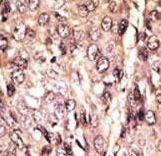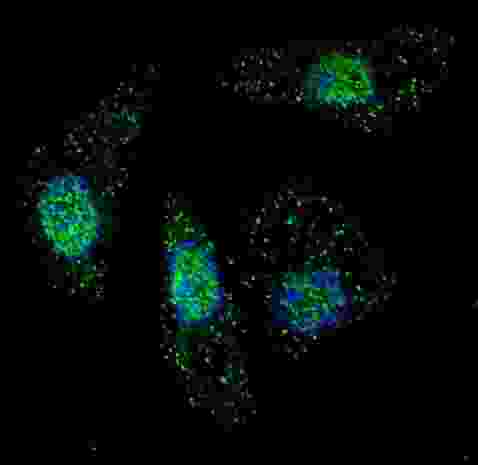
Formalin-fixed and paraffin-embedded human cancer tissue reacted with the primary antibody, which was peroxidase-conjugated to the secondary antibody, followed by AEC staining. This data demonstrates the use of this antibody for immunohistochemistry; clinical relevance has not been evaluated. BC = breast carcinoma; HC = hepatocarcinoma.

Fluorescent image of U251 cells stained with ATG7 antibody. U251 cells were treated with Chloroquine (50 mu M,16h), then fixed with 4% PFA (20 min), permeabilized with Triton X-100 (0.2%, 30 min). Cells were then incubated ATG7 primary antibody (1:200, 2 h at room temperature). For secondary antibody, Alexa Fluor 488 conjugated donkey anti-rabbit antibody (green) was used (1:1000, 1h). Nuclei were counterstained with Hoechst 33342 (blue) (10 ug/ml, 5 min). ATG7 immunoreactivity is localized to autophagic vacuoles in the cytoplasm of U251 cells, supported by Human Protein Atlas Data (http://www.proteinatlas.org/ENSG00000197548).

The anti-APG7L antibody is used in Western blot to detect APG7L in mouse liver tissue lysate. APG7L(arrow) was detected using the purified antibody.

APG7L Antibody (R509) western blot of HeLa cell line lysates (35 ug/lane). The APG7L antibody detected the APG7L protein (arrow).

Western blot of anti-hAPG7L-R509 antibody in 293 cell line lysates transiently transfected with the ATG7 gene (2 ug/lane). hAPG7L-R509(arrow) was detected using the purified antibody.




